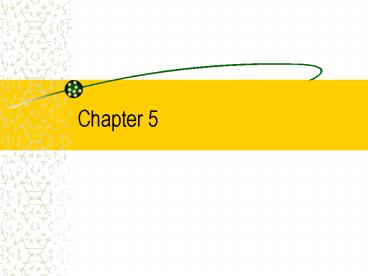Development Through the Lifespan - PowerPoint PPT Presentation
1 / 27
Title:
Development Through the Lifespan
Description:
Store Model of. Information Processing. Information-Processing ... Becoming a communicator. Joint attention. Give-and-take. Preverbal gestures. Starting to Talk ... – PowerPoint PPT presentation
Number of Views:47
Avg rating:3.0/5.0
Title: Development Through the Lifespan
1
Chapter 5
2
Piagets Theory Schemes
- Psychological structures
- Organized ways of making sense of
__________________ - Change with age
- Action-based ________________________
- Later move to thinking before acting pattern
creative and deliberate
3
Building Schemes
- ______________________
- Building schemes through direct interaction with
environment - ____________________
- Using current schemes to interpret external world
- __________________-
- Adjusting old schemes and creating new ones to
better fit environment
4
Using Assimilation and Accommodation
- _________________ and Disequilibrium
- Use assimilation during equilibrium
- Disequilibrium prompts accommodation
- __________________________
- Internal rearranging and linking schemes
5
Sensorimotor Stage
- ______________________
- Building schemes through sensory and motor
exploration - Circular reactions
6
Sensorimotor Substages
7
Object Permanence
- Understanding that objects _____________________
when out of sight - According to Piaget, develops in Substage 4
- Not yet complete
- A-not-B search error
8
Mental Representations
- Internal, mental depictions of objects, people,
events, information - Can manipulate with mind
- Allow __________________ and _________________
9
Deferred Imitation
- Piaget Develops about 18 months
- Newer research
- 6 weeks _______________
- 6 9 months copy
- actions with objects
- 12 14 months ____________________________
- 18 months imitate intended,
- but not completed, actions
10
Evaluation of the Sensorimotor Stage
11
Core Knowledge Perspective
- Born with ___________, special-purpose knowledge
systems - Core domains of thought
- Core domains allow
- quick grasp of
- related information
- Support rapid
- early development
12
Suggested Domains of Core Knowledge
- _______________
- Psychological
- _______________
- Numerical
13
Infants Numerical Knowledge
- Infants may be able to
- Discriminate quantities up to 3
- Do _______________________
- Findings are
- controversial
14
Store Model of Information Processing
15
Information-Processing Improvements
16
Development of Categorization
- _________________
- Based on similar overall appearance or prominent
part
- _________________
- Based on common function or behavior
- Later add event categories
17
Vygotskys Sociocultural Theory
- _______________ (other people) contribute to
cognitive development - _______________________ tasks child cannot do
alone but can learn to do with help of more
skilled partners
18
Toddler/InfantIntelligence Tests
- __________________________
- Cognitive
- ____________________
- ______________
- Social-Emotional
- Adaptive Behavior
- HOME
- Home Observation for Measurement of the
Environment
19
Meaning of Different IQ Scores
20
Normal Distribution of IQ Scores
21
Signs of DevelopmentallyAppropriate Child Care
- Adult-child interactions
- Teacher qualifications
- Relationships with parents
- Licensing accreditation
- ___________________
- ___________________
- Caregiver-child ratio
- _____________________
22
IQ Improvement from Early Intervention Programs
23
Three Theories of Language Development
24
Getting Ready to Talk
- First speech sounds
- _________________
- __________________
- Becoming a communicator
- Joint attention
- Give-and-take
- Preverbal gestures
25
Starting to Talk
- First Words
- ____________________
- Overextension
- Two-Word Utterances
- ________________________
26
Individual Differences in Language Development
- Environment
- Child-Directed Speech (CDS)
- Gender
- Personality
- Language Style
- _________________
- _______________
27
Supporting Early Language Learning































